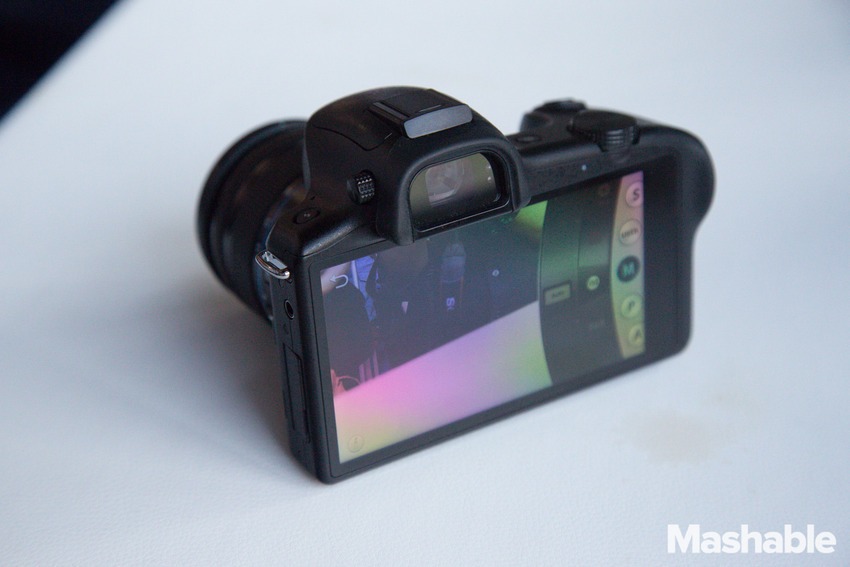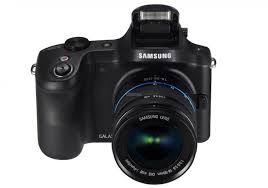
Samsung has upgraded the Android camera experience from the original Samsung Galaxy Camera. That product was already a game-changing device, but the Galaxy NX takes it to a new level, adding the power of an interchangeable-lens to its mirrorless camera as well as improving various aspects of the camera’s function.
At least, that’s what I could discern from trying out the Galaxy NX for a few minutes this afternoon at a demo in New York City shortly after Samsung unveiled it (here’s a full run-down). I focused mainly on the camera features — not the general Android functions — and came away really liking many of the choices Samsung made.
The best example is how the dial on top of the camera works. Like the Galaxy Camera, the NX has onscreen manual controls that appear as virtual dials. They were a little buried in the Galaxy Camera, only accessible after a couple of button presses, even if you were already in manual mode. But the NX improves this by instantly calling up the manual dials when push in on the dial. From there you rotate to select the exact shutter speed, aperture or ISO you want — much more efficient.
The screen is exactly the same as the Galaxy Camera’s, a 4.8-inch display that takes up almost the entire backside of the device. On the NX, though, there isn’t an ever-present Home button to take you back to Android; instead, you swipe left to see your home screen. I’m not sure what the rationale is for the change — maybe Galaxy Camera users had too many accidental taps — anyone using the NX for the first time will be unsure how to find their apps.
I’m also not sure why Samsung opted to build a viewfinder into the Galaxy NX in addition to the LCD. It’s certainly a welcome addition, but I prefer the optional viewfinders that attach to a camera “shoe” up top. The viewfinder on the Galaxy NX is great The viewfinder on the Galaxy NX is great, though — when you bring your eye up to it, the LCD automatically shuts off thanks to a proximity sensor.

It’s hard to say after a few minutes of use, but the Galaxy NX also seems to upgrade the experience in another key way: speed. I felt the camera was responding to touches and swipes faster than the Galaxy Camera. It seems the spec bump from a 1.4 to a 1.6 quad-core CPU makes a difference.
When the Galaxy NX becomes available (there’s no price or release date yet), it’ll boast a 4G LTE connection for uploading and sharing pics on the go, but the unit I checked out didn’t have SIM card, so I couldn’t see how well it worked. The Wi-Fi wasn’t connected either, so I couldn’t test one of the more interesting functions: Photo Suggest, which recommends things to photograph that are around you based on suggestions from “real” photographers.
If the Galaxy Camera showed the potential of Android in a camera, the Galaxy NX is the next step in realizing that potential with a more “serious” image-capturing technology. I’m excited to give it a full test, but do you think pro or semi-pro photographers will respond to it? Share your thoughts in the comments.
